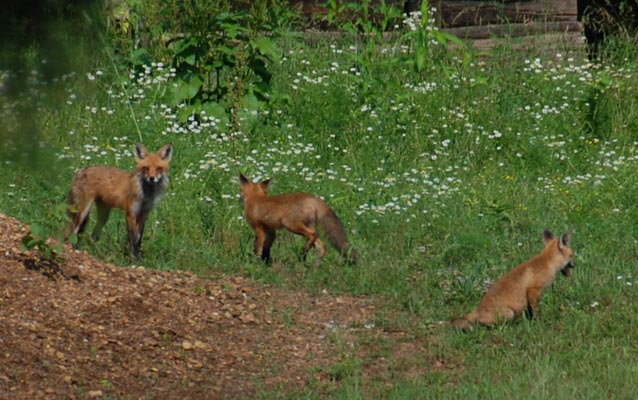Last updated: March 8, 2019
Lesson Plan
Predator Prey Adaption

- Grade Level:
- Upper Elementary: Third Grade through Fifth Grade
- Subject:
- Math,Science
- Lesson Duration:
- 30 Minutes
- State Standards:
- Students will be able to define predator and prey.
Students will describe the importance of adaption.
Essential Question
What is the relationship between predator and prey and the importance of adaption?
Objective
Students will be able to define predator and prey.
Students will describe the importance of adaption.
Background
Animals display a variety of behaviors in predator/prey relationships. These adaptions help them survive. Some animals run to get away from a predator. Animals may also signal to others that danger is near. If a predator is too close to the animal and it cannot run away or hide, the prey may freeze. Sometimes being very still can help the animal go unnoticed by the predator. Also, the color of the prey's body can help it camouflage itself.
Hunting was the primary means of obtaining meat for the earliest settlers. Indiana in the early 19th century was rich in natural resources and game was abundant. Deer and bear were plentiful and pigeons were reported in flocks so large that they darkened the sky when they flew over. As the state became more heavily settled, hunting became more of a challenge and the pioneer came to rely more upon agriculture to feed his family.
Preparation
red bandana, hula hoops, food tokens (cut up small pieces of heavy paper or cardboard)
Procedure
Select predators and have them wear a red bandana to identify themselves as predators (1 predator for every 4-6 prey). Using a gym or playing field, identify one end as the food source and the other end as shelter. In between these areas scatter the hula hoops around on the ground. These will represent temporary shelters. Scatter the food tokens (pieces of cardboard) on the ground in the food source area.
The object of the game is for the prey to collect three food tokens to survive. They must do this, however, without being caught by a predator. The predator must catch two prey in order to survive. To begin all the prey should be in the permanent shelter. The predators should be scattered about between the permanent shelter and the food tokens. When the teacher says go, the prey move toward the food source. The prey can avoid being captured by a predator by having at least one foot in one of the temporary shelters. A predator cannot tag a prey that is in any shelter. The prey can also avoid capture by freezing when a predator is within 5 feet of the prey. A predator cannot tag a prey that is frozen. The prey picks up one food token and returns to the permanent shelter. The process is repeated until the prey has three tokens. If a prey is tagged, then the prey must stand on the sidelines.
Play several rounds and allow each student to be both predator and prey. After the game discuss which ways of escape worked best. Which were the easiest. What did predators do when the prey froze.
Vocabulary
Camouflage, predator, prey
Related Lessons or Education Materials
Many of Abe's friends and relatives spoke about his love of animals. During his lifetime, he had dogs, cats, goats, and horses. It is said that as a young boy, he preached sermons to his family declaring that he was against cruelty to animals. Legends say that while living at Knob Creek, Kentucky, young Abraham Lincoln found a dog with a broken leg. He made a splint and took care of the dog, naming it "Honey." According to his childhood friend Austin Gollaher, Abraham also had a pet crow, raccoon, and a goat named "Billy." His step-sister remembered him saying that an ant's life was to it, as sweet as ours. His long-time friend in Illinois, Joshua Speed, who was also from Kentucky, told about a trip he took with Mr. Lincoln and two other gentlemen in 1839 back to Springfield, Illinois. While riding along a country road through a thicket of wild plum and crabapple trees, the group had stopped to water their horses. A severe storm had occurred previously. Mr. Lincoln disappeared for a while. He caught two little birds in his hand which had been blown from their nest and was hunting for the nest. He finally found the nest and placed the birds back within it. The three other travelers laughed at him, but he earnestly said that he could not have slept that night if he had not given the two little birds to their mother.
